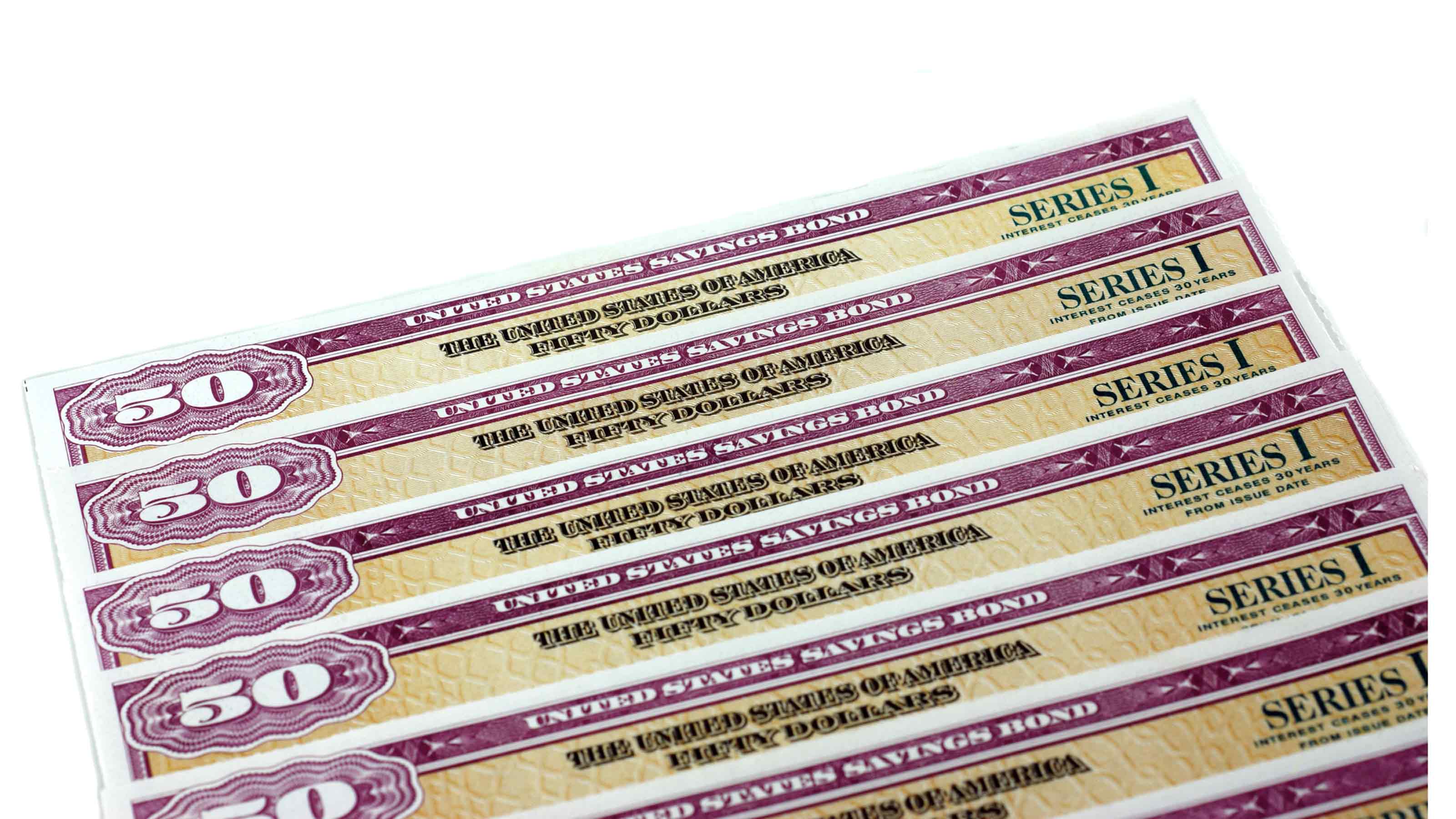Earn 3.54% With Series I Bonds
A savings or money market deposit account is best for quick cash, but I bonds can fit into a longer-term savings plan.


With interest rates on most savings accounts and certificates of deposit paying well under 1%, the 3.54% composite rate on newly issued Series I savings bonds is hard to ignore. The composite rate consists of a fixed rate, which is currently 0% on new bonds, and an inflation rate, which is based on the government’s consumer price index and adjusts every six months from the bond’s issue date. Rates on new bonds are set each May and November. The composite rate was 1.68% until May.
Kiplinger expects a 4.4% rise in overall prices this year as a reopening economy, government stimulus and shortages contribute to price increases. If inflation lessens down the road, a weak inflation rate combined with a 0% fixed rate could mean poor returns on your I bond. But “even if the total rate drops to zero in six months—which is highly unlikely—you will likely earn a higher return with 3.54% for six months and zero for the next six months than you would with other options,” says Chuck Bender, a certified financial planner in Baltimore. (If the inflation rate becomes negative because of deflation, an I bond’s composite rate does not go below 0%.)
You can’t redeem an I bond within the first year. If you cash it in before five years have passed, the penalty is three months’ worth of interest—considerably less severe than the early-withdrawal penalties on most five-year CDs. Even if you pay the penalty, “you will still likely be far ahead of where you’d be if you just earned the standard interest rate on your bank savings account,” says Matt Hylland, a financial planner in Cedar Rapids, Iowa. A savings account or money market deposit account is the best choice for money you may need to access immediately, such as an emergency fund, but I bonds can fit well into a longer-term savings stash.

Sign up for Kiplinger’s Free E-Newsletters
Profit and prosper with the best of expert advice on investing, taxes, retirement, personal finance and more - straight to your e-mail.
Profit and prosper with the best of expert advice - straight to your e-mail.
Each year, you can purchase up to $10,000 in electronic I bonds at treasurydirect.gov, plus up to $5,000 in paper bonds with your federal tax refund. You don’t pay state or local income tax on the interest, and you can defer federal income tax until you redeem the bond or it reaches maturity after 30 years.
Get Kiplinger Today newsletter — free
Profit and prosper with the best of Kiplinger's advice on investing, taxes, retirement, personal finance and much more. Delivered daily. Enter your email in the box and click Sign Me Up.

Lisa has been the editor of Kiplinger Personal Finance since June 2023. Previously, she spent more than a decade reporting and writing for the magazine on a variety of topics, including credit, banking and retirement. She has shared her expertise as a guest on the Today Show, CNN, Fox, NPR, Cheddar and many other media outlets around the nation. Lisa graduated from Ball State University and received the school’s “Graduate of the Last Decade” award in 2014. A military spouse, she has moved around the U.S. and currently lives in the Philadelphia area with her husband and two sons.
-
 Designing Your 'Immortal' Financial Plan
Designing Your 'Immortal' Financial PlanExplore an approach that offers solutions for those navigating the intersection of longevity, fulfillment and financial security.
By Dennis McNamara
-
 How to Protect Your Privacy While Using AI
How to Protect Your Privacy While Using AIHow to keep your information and finances safe while using AI, including ChatGPT and Perplexity.
By Bob Haegele
-
 What Does Medicare Not Cover? Eight Things You Should Know
What Does Medicare Not Cover? Eight Things You Should KnowHealthy Living on a Budget Medicare Part A and Part B leave gaps in your healthcare coverage. But Medicare Advantage has problems, too.
By Donna LeValley
-
 Roth IRA Contribution Limits for 2025
Roth IRA Contribution Limits for 2025Roth IRAs Roth IRA contribution limits have gone up. Here's what you need to know.
By Jackie Stewart
-
 Four Tips for Renting Out Your Home on Airbnb
Four Tips for Renting Out Your Home on Airbnbreal estate Here's what you should know before listing your home on Airbnb.
By Miriam Cross
-
 Five Ways to a Cheap Last-Minute Vacation
Five Ways to a Cheap Last-Minute VacationTravel It is possible to pull off a cheap last-minute vacation. Here are some tips to make it happen.
By Vaishali Varu
-
 How to Figure Out How Much Life Insurance You Need
How to Figure Out How Much Life Insurance You Needinsurance Instead of relying on rules of thumb, you’re better off taking a systematic approach to figuring your life insurance needs.
By Kimberly Lankford
-
 Amazon Big Deal Days Is Coming! We’ve Got All the Details
Amazon Big Deal Days Is Coming! We’ve Got All the DetailsAmazon Prime To kick off the holiday season with a bang, Amazon Big Deal Days runs Tuesday, October 8 and Wednesday, October 9.
By Bob Niedt
-
 How to Shop for Life Insurance in 3 Easy Steps
How to Shop for Life Insurance in 3 Easy Stepsinsurance Shopping for life insurance? You may be able to estimate how much you need online, but that's just the start of your search.
By Kaitlin Pitsker
-
 Five Ways to Shop for a Low Mortgage Rate
Five Ways to Shop for a Low Mortgage RateBecoming a Homeowner Mortgage rates are high this year, but you can still find an affordable loan with these tips.
By Daniel Bortz